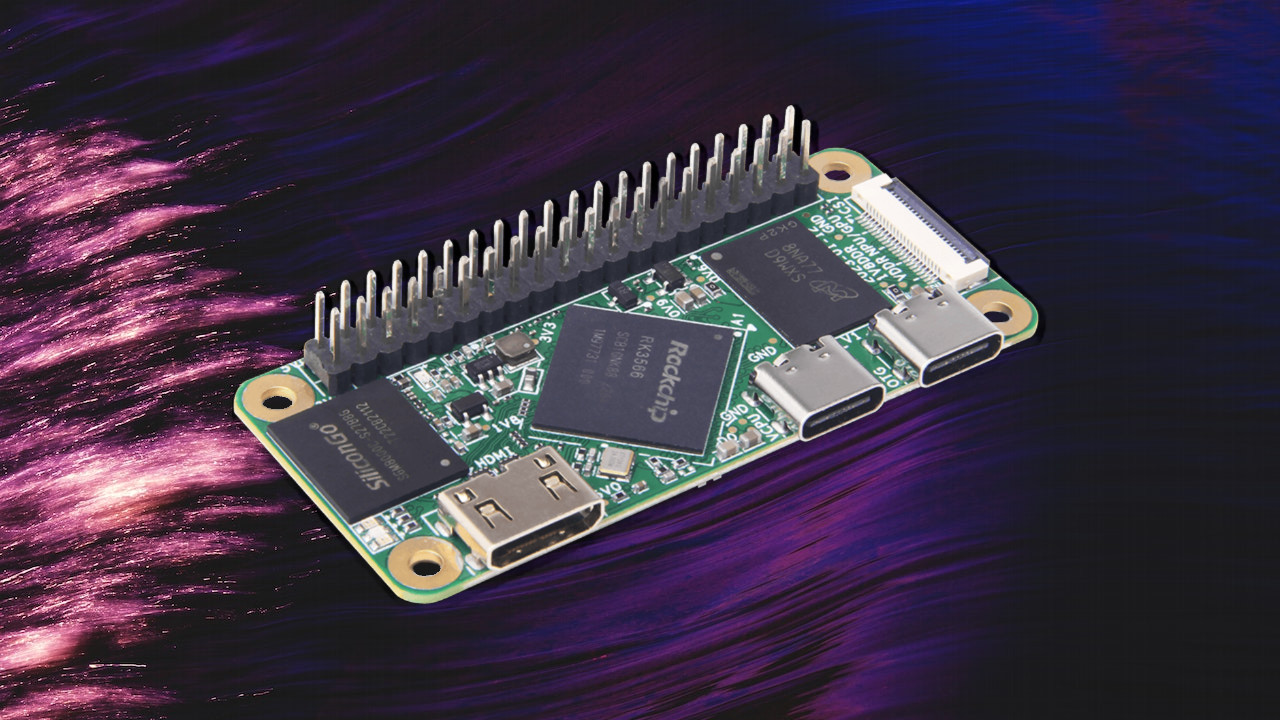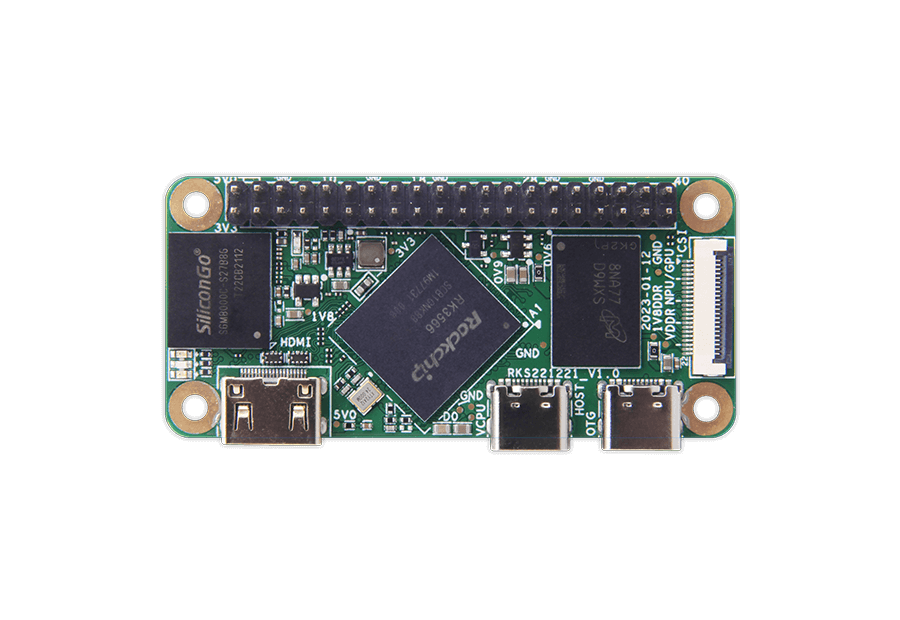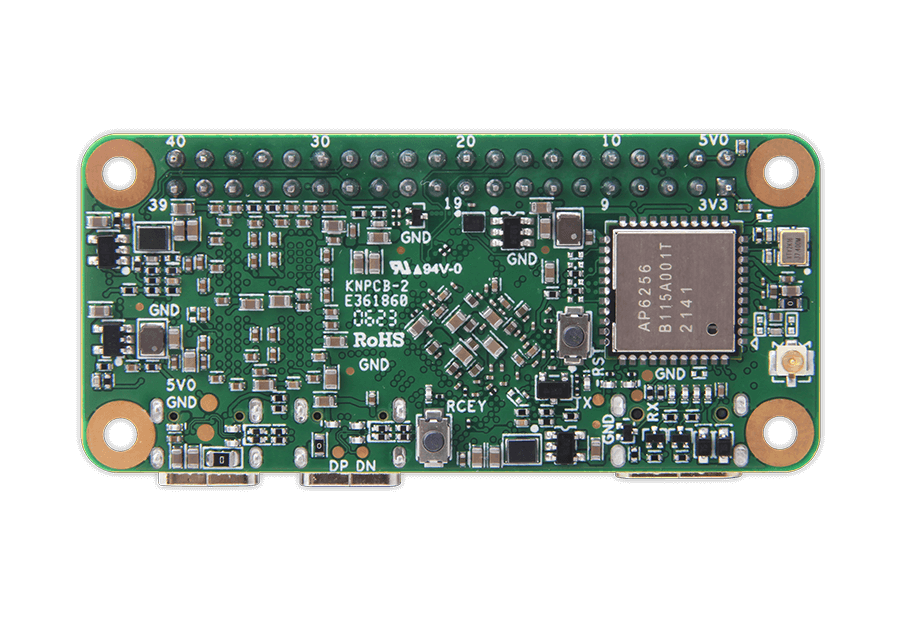Raspberry Pi Zero 2 W Alternative from Geniatech Has up to 8GB RAM
More power, same layout

Stock of Raspberry Pi is getting better, with our favorite board, the Raspberry Pi 4, now staying in stock for longer! But one board is still rather elusive — the Raspberry Pi Zero 2 W. So if you need a little more power in a smaller form factor, perhaps Geniatech's XPI-3566-ZERO is for you. The catch? You need to buy in bulk. Hat tip to CNX Software for spotting this board.
| SoC | Rockchip RK3566 with Quad-core Arm Cortex-A55 up to 1.8GHz |
| GPU | Arm G52 2EE GPU |
| RAM | 512MB LPDDR RAM( up to 8GB) |
| Storage | 8GB eMMC (up to 128GB Optional) |
| Wireless | WIFI Module 2.4G/5G, BT5.0 |
| Ports | 1x Mini HDMI Out |
| Row 6 - Cell 0 | 1x Type-C for USB 2.0 OTG |
| Row 7 - Cell 0 | 1x Type-C for USB Host with 5VDC input |
| Row 8 - Cell 0 | 1x MIPI-CSI |
| GPIO | 40 pin GPIO (UART, SPI, I2C, PWM) |
| Power | DC 5V / 2A |
| Dimensions | 65 x 30mm |
The Rockchip RK3566 SoC is powered by a quad-core Arm Cortex A55, the successor to the Arm Cortex A53 used in the Raspberry Pi Zero 2 W and the Raspberry Pi 3. The 1.8GHz CPU is a boost from the 1GHz quad-core Arm A53 found in the Zero 2 W, but that is just part of the story. The Raspberry Pi Zero 2 W comes with just 512MB of RAM. Enough for headless projects, but running a desktop on the Zero 2 W will soon drain your resources.
The XPI-3566-ZERO comes in configurations between 512MB and a whopping 8GB of RAM; add to that eMMC storage options between 8 and 128GB, and we have a potent and tiny platform. Networking duties fall to an unnamed Wi-Fi and Bluetooth chip that provides 2.4 and 5GHz Wi-Fi, along with Bluetooth 5.0. On the underside of the board, there appears to be an external aerial connector. This means that there is no antenna built into the PCB, unlike the Raspberry Pi Zero W range of boards.



Two USB C ports provide power (DC 5V 2A) and USB 2.0 OTG, so no super-speed USB shenanigans, but we have a solid connector for expansion. Mini HDMI provides the only means of video output and emulates the connection found on the Raspberry Pi Zero W. We much prefer Mini over Micro HDMI. The latter feels just too fragile for our clumsy hands.
A MIPI-CSI camera connector is on one side, and it looks to be physically compatible with the official Raspberry Pi cameras, but you will need to use the Zero adapter cable. Talking of compatibility, the big question is, "Is the 40-pin GPIO Raspberry Pi compatible?" A quick check of the datasheet [PDF] shows that the pinouts match. So the best Raspberry Pi HATs can fit on top of the board, but software support will vary between the many add-ons.
Talking of software support, we have the usual operating system selection, Android and Debian Linux. But "Raspberry Pi OS emulator" has us intrigued. Is this a fork of Raspberry Pi OS, a QEMU VM for development, or something else entirely?
How much does Geniatech's XPI-3566-ZERO cost? Well, that is where we draw a blank. Getting a price requires a quotation, and we hazard a guess that they won't be selling these boards in single figures.
Get Tom's Hardware's best news and in-depth reviews, straight to your inbox.

Les Pounder is an associate editor at Tom's Hardware. He is a creative technologist and for seven years has created projects to educate and inspire minds both young and old. He has worked with the Raspberry Pi Foundation to write and deliver their teacher training program "Picademy".
-
sundragon I'm so happy to see other companies filling in the gap when Raspberry Pi became vapor. The biggest issue with these companies is OS support. I do not want to run some crappy custom branch of android from 5 years ago or half-assed supported linux branch that breaks if you update. RBPi game changer is the OS as well as their hardware - it's consistent and safe. RBPi emulations sounds good if it works well and is updated.Reply